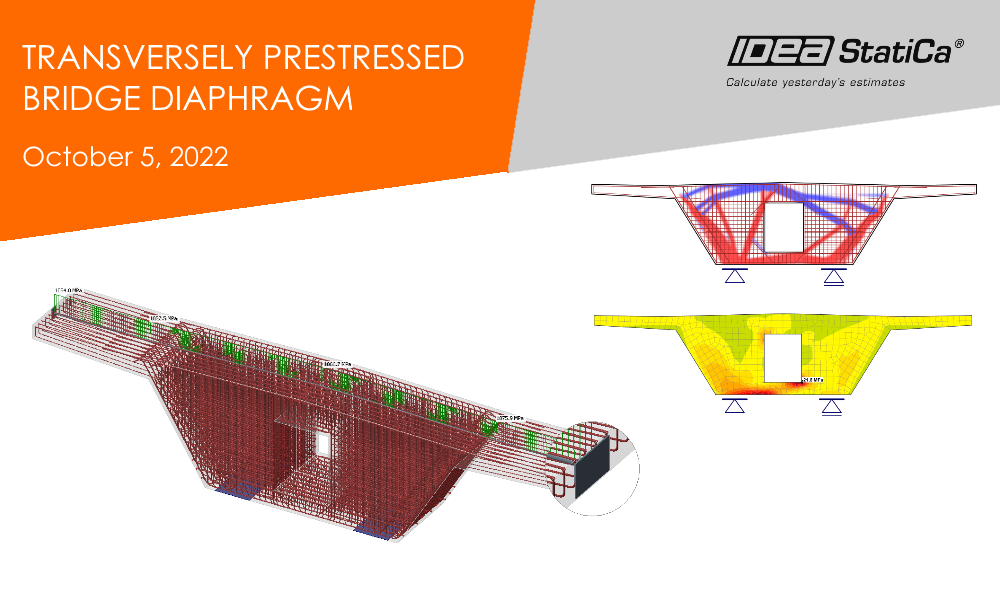Transversely prestressed bridge diaphragm
-
2022-10-05T00:00:00.0000000ZWebinar.Detail.WebinarDate.InLocalTime
Дата вебинара:
Присоединяйтесь к вебинару и узнайте много полезного
- Geometry and reinforcement
- Load cases and combinations according to Eurocode
- Anchorage stress
- Calculation settings
- Interpretation of results and report
Докладчики
In this webinar, you will learn how to model, correctly load and check a prestressed bridge diaphragm resulting in a full report with complete code-checks for ultimate limit state together with the serviceability limit state.
Commonly used methods, such as the Strut&Tie method, especially fail in checking the serviceability limit state-stress limitation, and crack width calculation. Cracks are a common phenomenon in diaphragms, which significantly affect the durability of the entire bridge. Crack width can be reduced, for example, by using transverse prestressing.
Are you sometimes struggling with how to solve any crossbar quickly, and safely, even with the use of prestressing?
With the innovative and more advanced Compatible Stress Field Method (CSFM) extended with prestressing, structural engineers can design and check prestressed concrete structures including discontinuity areas such as openings, partially loaded areas under bearings, or anchorage areas. All this packed in one application IDEA StatiCa Detail.
If you want to see more of IDEA StatiCa Detail in action, there are two other recorded webinars to watch:
Or browse our Support center for tutorials and read the theoretical background.





